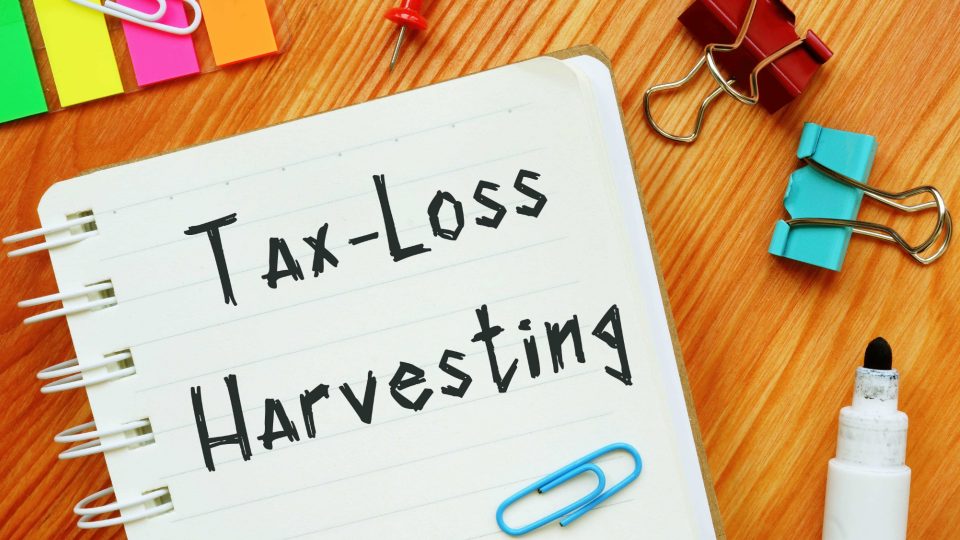Tax-loss harvesting is a strategy typically used by financiers to use realized losses on some of their investments to offset financial investment gains or ordinary income. Tax-loss harvesting is typically considered something to focus on near year-end, but financial consultants should work with their customers to collect tax-losses throughout the year as suitable.
For clients with taxable financial investments, tax-loss harvesting should be a tool adviser can utilize in handling portfolios during the year. Investments typically should not be sold simply to recognize a loss, but if some or all of a financial investment position benefits a sale understanding the loss can be advantageous to a customer.
Realized losses can be used to balance out capital gains on other holdings in the portfolio, both understood capital gains from offering a holding and capital gains circulations from mutual funds. To the extent that losses exceed gains in a given year, the excess losses can be utilized to balance out as much as $3,000 of an investor’s ordinary earnings because of year. Excess losses above that quantity can be carried forward to be utilized in subsequent years.
While understanding a tax loss need to not be an objective in and of itself, if this can be done in the normal course of handling a portfolio, the tax cost savings might be useful to a client’s total scenario.
Part of the Rebalancing Process
As advisors work with customers to rebalance their portfolios, it’s always an excellent idea to do this in the most tax-efficient method possible. If there are holdings that you would advise selling as part of the procedure that has losses, this makes good sense. Perhaps the client has a holding that you suggest selling a portion of as part of the rebalancing process.
If the holding was acquired in multiple lots and a part of the shares presently show a loss, selling those shares as part of the portfolio rebalancing procedure makes a great deal of sense. This kind of circumstance illustrates the significance of utilizing the particular cost approach versus the average cost technique of tape-recording a financial investment’s expense basis when possible.
Matching Gains and Losses
In utilizing tax-loss harvesting, it is very important to be familiar with the IRS buying rules for matching long and short-term gains and losses.
Tax losses should first be matched against gains of the same type. Short-term losses versus short-term gains, long-lasting losses against long-lasting gains. If losses of either type are higher than gains of the same type, the excess can be used to balance out gains of the other type. For instance, if the investor’s short-term losses are higher than their short-term gains for that year, any excess can be utilized to balance out long-lasting capital gains if there are any.
When possible, it’s typically a great idea to do what you can to minimize any short-term gains as they are taxed at ordinary income tax rates which are typically higher than the preferential long-term capital gains rates.

Be Careful of the Wash-Sale Guideline
Whether rebalancing or otherwise making modifications in a portfolio, it is very important to be cognizant of the wash-sale rule. This rule specifies that a financier can not realize a loss on the sale of a security if they purchase shares of the same or of significantly identical security within a 61-day window that includes the one month prior and the 30 days after the sale that resulted in the loss.
Not trading in the precise very same security is simple to understand. If you take a tax-loss on shares of IBM ( IBM) – Get Report it’s quite uncomplicated that your client requires to not purchase extra shares throughout this 61-day duration.
“Considerably comparable” can be a bit harder. For instance, if your client sells shares of one S&P 500 shared fund or ETF at a loss, if they buy another S&P 500 shared fund or ETF from another fund company this would likely be considered considerably identical security and the capability to deduct the loss for taxes would be prohibited.
Nevertheless, if an S&P 500 fund has cost a loss and the proceeds were used to acquire shares in a mutual fund that tracks the total U.S. stock exchange, this most likely would not be thought about a purchase of substantially similar security because it most likely tracks a various index and has a various financial investment objective.
The time limitations for the wash-sale rules also encompass the customer’s IRA account. They would likewise encompass a pension for the self-employed such as a SEP-IRA or solo 401( k). In other words, you can’t sell a security for a loss and after that purchase, that security in the customer’s IRA within the wash-sale duration, doing so would prohibit making use of the loss on the sale.
Including Value as a Consultant
While the majority of advisers likely concur that tax issues must be a secondary factor to consider when choosing whether to offer financial investment, assisting your customers to maximize any tax cost savings opportunities will be valued by them. As you handle their portfolio throughout the year, it makes sense to search for any tax-loss harvesting opportunities in the normal course of managing their investments.

